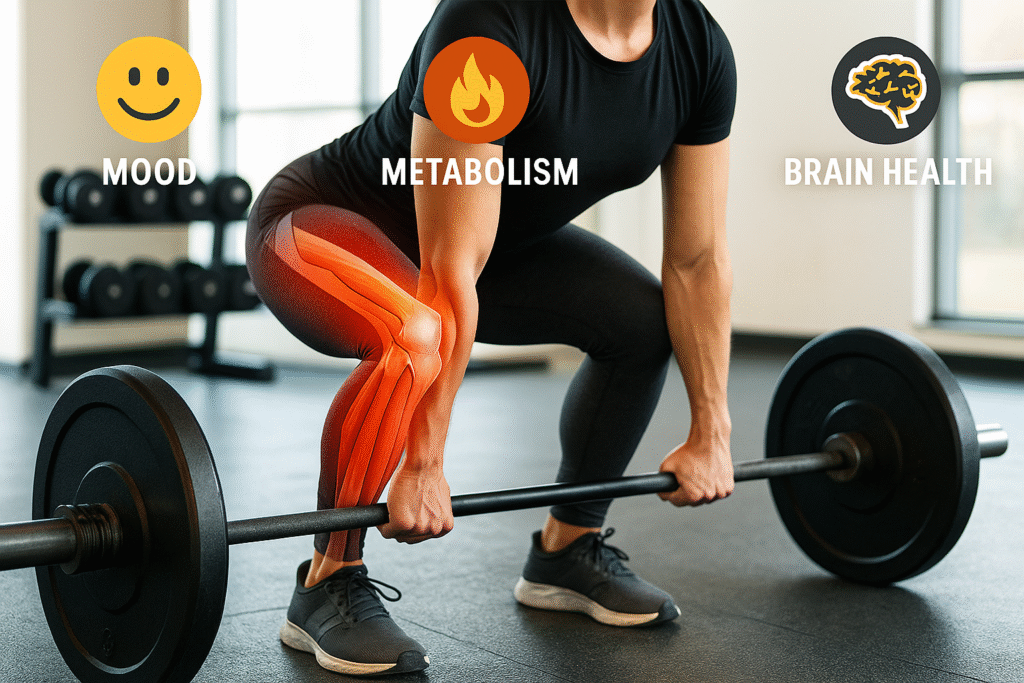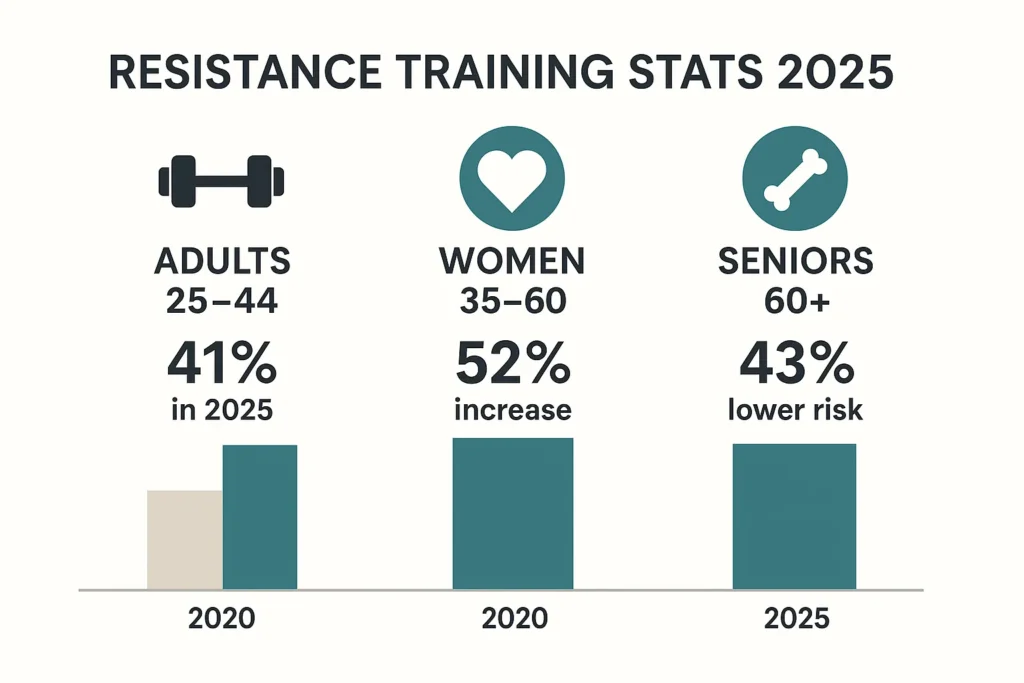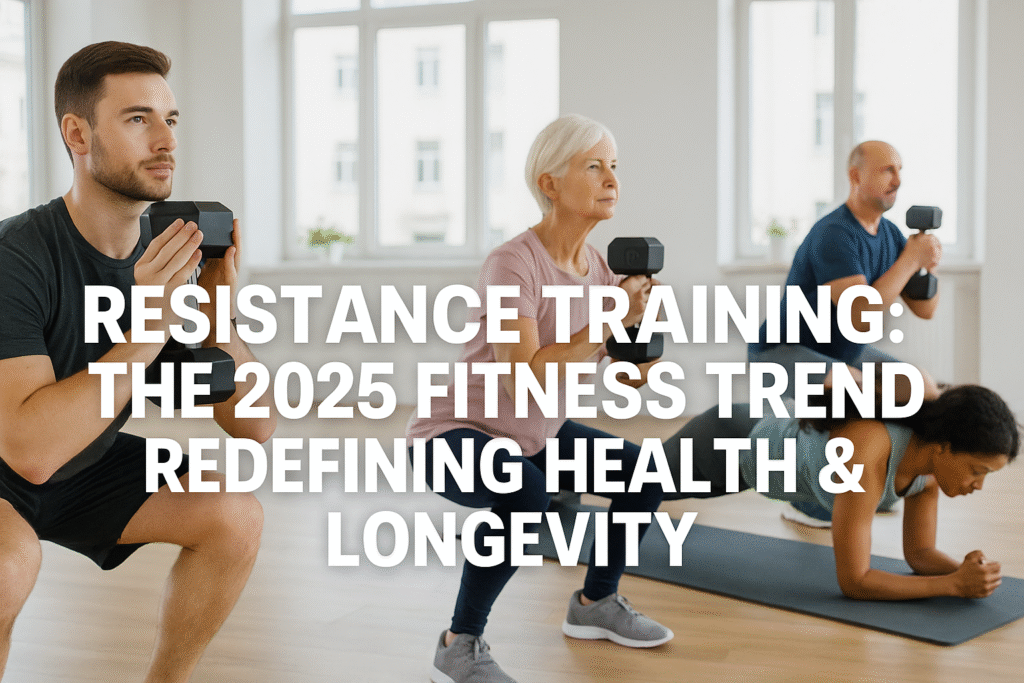Resistance Training 2025 is emerging as the top wellness trend, gaining popularity for its profound physical and mental health benefits. As fitness trends continue to evolve, resistance-based workouts are being recognized not just for muscle growth, but for improving longevity, resilience, and overall quality of life—especially for women and older adults.
According to recent wellness reports, resistance training is no longer just for bodybuilders or gym-goers chasing aesthetics. It has firmly entered the mainstream as a powerful tool for preventing injuries, improving bone density, supporting mental resilience, and even enhancing longevity. With a growing body of scientific support and widespread adoption among all age groups, this type of training is reshaping the definition of what it means to stay healthy and strong.
Why Resistance Training 2025 Is Leading the Wellness Movement
The rise in popularity of resistance training isn’t accidental. It reflects a broader shift in how society views fitness—not just as a way to sculpt bodies, but as a long-term strategy for healthspan optimization. In 2025, more people are prioritizing functional strength over appearance-based goals.
Women in particular are embracing resistance training at record rates, encouraged by new research that highlights its role in hormonal balance, metabolic efficiency, and bone health—a critical concern post-menopause. Likewise, older adults are turning to strength-building routines to counteract age-related muscle loss (sarcopenia), reduce fall risk, and maintain independence.
Core Benefits: More Than Just Muscle

While building muscle mass remains a key outcome, the benefits of resistance training go far beyond aesthetics. According to recent studies, it plays a vital role in reducing chronic inflammation, improving insulin sensitivity, and boosting cognitive function. These effects are especially critical as populations age and rates of chronic diseases like type 2 diabetes, osteoporosis, and dementia continue to climb.
What’s more, resistance training has been linked to improved mood and mental well-being. A 2022 study published in JAMA Psychiatry found that participants who engaged in strength training experienced significantly lower levels of depression and anxiety—comparable to results from aerobic exercise. This has elevated resistance training from a purely physical intervention to a tool for mental resilience.
From Squats to Longevity: The Science Behind Strength
The exercises themselves aren’t complex, but their impact is profound. Movements such as squats, deadlifts, planks, and push-ups activate multiple muscle groups and contribute to neuromuscular coordination, bone stimulation, and cardiovascular improvements when performed consistently.
Emerging research highlights a clear correlation between muscle strength and reduced all-cause mortality. In one large-scale meta-analysis, individuals with higher muscle mass and grip strength had a significantly lower risk of early death, independent of body weight or cardio fitness. This has led some experts to reframe resistance training as a “longevity prescription,” not just an exercise regimen.
Accessibility and Inclusion: No Gym Required
One of the biggest appeals of resistance training in 2025 is its accessibility. Unlike other fitness trends that require fancy gear or expensive memberships, resistance workouts can be performed at home, with minimal equipment. Resistance bands, dumbbells, bodyweight routines, and even water bottles can deliver powerful results.
Apps and virtual trainers have further democratized access, offering guided routines that are customized to age, fitness level, and goals. As fitness becomes more inclusive, resistance training is proving to be one of the most adaptable and scalable strategies for a healthier population.
Strength in Numbers: The Data Behind the Movement

Recent health surveys and global fitness reports reveal a sharp uptick in resistance training participation across multiple demographics. A 2024 report by the Global Wellness Institute found that:
– 41% of adults aged 25–44 now include resistance training in their weekly routines—up from 29% in 2020.
– Among women aged 35–60, participation in strength-based workouts grew by 52% in just three years.
– Seniors (60+) engaged in resistance training at least twice a week showed a 43% lower risk of falls and 30% improvement in balance and mobility metrics.
A separate study published in the Journal of Aging and Physical Activity showed that individuals over 50 who performed regular strength training had a 36% lower risk of all-cause mortality compared to sedentary peers.
These findings support what fitness professionals have long observed: resistance training is not just a passing trend—it’s a critical public health intervention.
Health organizations like the World Health Organization (WHO) and Centers for Disease Control and Prevention (CDC) now recommend at least two sessions of strength training per week for all adults, citing its protective effects on bone density, metabolic health, and quality of life.
Main Takeaways (Bullet Points)
- • Resistance training has surged in popularity in 2025 as a key strategy for physical and mental health.
- • Women and older adults are leading adoption, driven by benefits in bone health, metabolism, and injury prevention.
- • Beyond muscle gain, strength training improves mood, reduces inflammation, and supports cognitive health.
- • Exercises like squats and planks are simple but offer profound longevity and anti-aging benefits.
- • Resistance training is highly accessible, requiring minimal equipment and no gym membership.
Source:
Marie Claire UK – Best Resistance Training Exercises for Health & Longevity (19 April 2025)
🔗 Explore More: 10 Best Exercises for Rapid Weight Loss
If you’re inspired to take action and want to combine strength with fat-burning efficiency, we recommend checking out our related guide:
👉 10 Best Exercises for Rapid Weight Loss
In this companion article, you’ll find high-impact workouts—from HIIT to bodyweight circuits—that complement resistance training perfectly. Whether you’re aiming for fat loss, strength gains, or better overall conditioning, combining both approaches can deliver powerful results.














